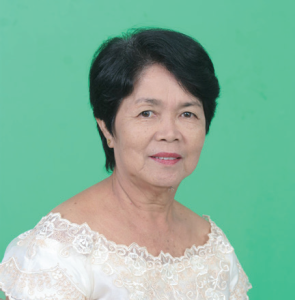“PNJKIS Calinan’s Nine-Year Journey towards the Road to Success” by: Carmen C. Apigo
 “Remember the days, we set out together with faith?” the first line of the song echoed in the air. And as these children sang their song with tears in their eyes, memories of the past were coming back. It seemed like it was just yesterday when a plan of putting up a campus of the Philippine Nikkei Jin Kai International School (PNJKIS) in Calinan was made. Soon enough, a Japanese descendant-run school was finally built in Durian Village, Calinan, Davao City. In June of 2006, the first school year of PNJKIS Calinan begun. It started with only 7 pupils in Nursery and 8 pupils in Kinder with only 2 teacher Miss Cherry Grace Martil for basic academic subjects for Preschool and Mrs. Evelyn Jagmoc, for the Japanese language. The following year, Preparatory level was opened to complete its Pre-School Education. From then on, another level was added each year to continue what has been started by the first batch of enrollees.
“Remember the days, we set out together with faith?” the first line of the song echoed in the air. And as these children sang their song with tears in their eyes, memories of the past were coming back. It seemed like it was just yesterday when a plan of putting up a campus of the Philippine Nikkei Jin Kai International School (PNJKIS) in Calinan was made. Soon enough, a Japanese descendant-run school was finally built in Durian Village, Calinan, Davao City. In June of 2006, the first school year of PNJKIS Calinan begun. It started with only 7 pupils in Nursery and 8 pupils in Kinder with only 2 teacher Miss Cherry Grace Martil for basic academic subjects for Preschool and Mrs. Evelyn Jagmoc, for the Japanese language. The following year, Preparatory level was opened to complete its Pre-School Education. From then on, another level was added each year to continue what has been started by the first batch of enrollees.
After nine years of learning, it was with so much happiness to know that from a group of 8 Kinder pupils, now ready to face the next stage are 22 Grade Six pupils. Seeing these grown up children wearing their white togas brought back the times when they were still the little boys and girls, learning to readand write their ABCs and counting their 123s, enjoying singing and dancing, playing and running. Nine years went by so fast. Their most awaited day has come. March 24, 2015 marked another milestone in the history of PNJKIS Calinan. The first batch of graduates marched their way to the aisle. Everybody was excited for this was the first ever commencement exercise of the school. The members of the Board of Trustees graced the memorable occasion. This event was even made more special with the presence of the people behind their success, their teachers, friends and parents. A heartfelt ceremony was held to start the event with Rev. Father Elvie Bordios, DCD as the celebrant. It was followed by the graduation rites to which the students were presented to the President of the Board of Trustees and finally recognized as newly graduates of the institution. Fulfillment and pride were curved in their smiles as they received their diploma, awards and medals. Unspoken words of gratitude were clearly written in their face. It was enough to know how happy they were. Continue reading “PNJKIS Calinan’s Nine-Year Journey towards the Road to Success” by: Carmen C. Apigo
